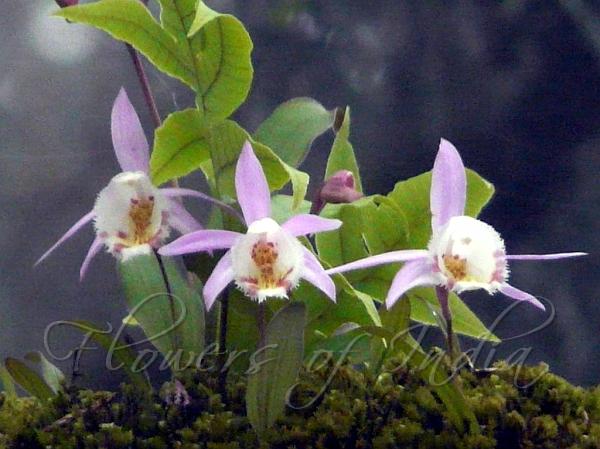|
| East-Asian Pleione |
|

|

| File size | 201687 |
| Original date | 6/9/10 2:41 PM |
| Resolution | 1024 x 768 |
| Flash | Flash did not fire, auto |
| Focal length | 82.8mm |
| Exposure time | 1/200s |
| Aperture | 4.2 |
| Focus Distance | |
| Metering Mode | Multi-segment |
| Camera make | Panasonic |
| Camera model | DMC-FZ18 |
| Sensor type | OneChipColorArea |
|
|
|
|
Photo: |
Botanical name: Pleione hookeriana Family: Orchidaceae (Orchid family)
Synonyms: Coelogyne hookeriana, Pleione laotica
Synonyms: Coelogyne hookeriana, Pleione laotica
East-Asian Pleione is named for Hooker, th director
of Kew, English Orchid botanist of 1800's. It is a small sized, cool to
cold growing orchid found growing on trees, rock or on the ground. It
has conical, clustered pseudobulbs carrying a single, apical,
persistent, plicate, elliptic-lanceolate, pointed leaf that tapers
gradually to the leaf-stalk base. The plant blooms as the new growths
are appearing in the mid-spring and summer on a slender, sheathed, 12
cm long, single flowered inflorescence with tubular, obliquely
truncate, obtuse floral bract. Flower are solitary, small; sepals and
petals pale purplish red to nearly white, lip white with a yellow
center and purple or yellowish brown spots. Flower-stalk and ovary are
1-2 cm. Dorsal sepal is nearly oblong or oblanceolate, 20-35 x 6-10 mm,
tip pointed; lateral sepals are lanceolate, falcate, slightly oblique,
usually as wide as but slightly shorter than dorsal sepal, tip pointed.
Petals are inverted-lanceshaped, 20-35 x 5-7 mm, tip pointed; lip
oblate or subcordate, 25-40 x 27-45 mm, obscurely 3-lobed, apical
margin irregularly toothed or almost entire, apex notched. Capsule is
nearly suboblong, 1-2.5 cm. East-Asian Pleione is found in the Himalayas,
in Bhutan, NE India, N Laos, Myanmar, Nepal, at altitudes of 1600-3100
m. Flowering: April-June.
| Identification credit: Pankaj Kumar, Sanjyoti Subba | Photographed in Tawang, Arunachal Pradesh & Yakchey, North Sikkim. |
• Is this flower misidentified? If yes,